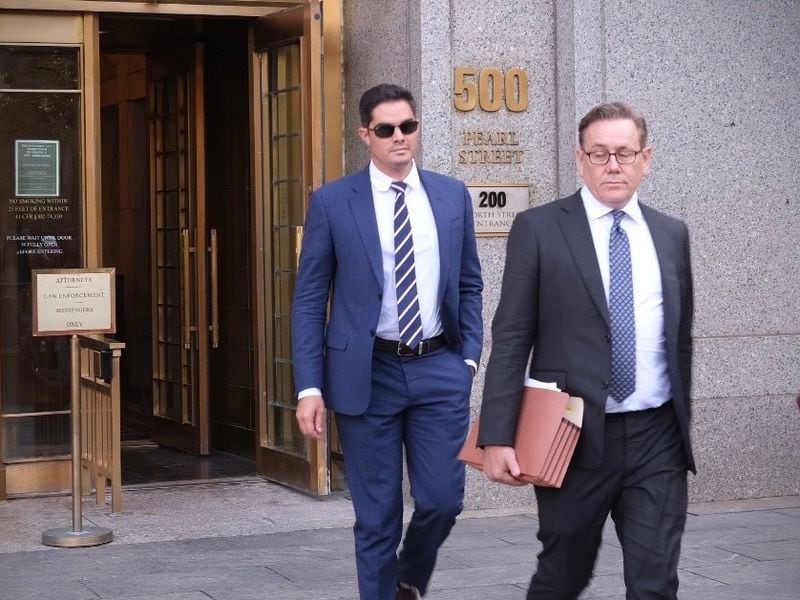Post-FTX, Bitcoin Is Ready for its Next Chapter
/arc-photo-coindesk/arc2-prod/public/LXF2COBSKBCNHNRE3WTK2BZ7GE.png)
Sam Bankman-Fried has been found guilty on all seven counts of fraud, and his first trial has come to a close with FTX’s founder and former CEO facing a possible century in prison.
Last November, FTX’s collapse kicked off a deep, dark crypto winter with the possibility of billions in customer funds lost and regulators hell-bent on suffocating the industry. Fast forward a year, and there’s the very real possibility of FTX’s estate returning 90% of customer funds. Bitcoin is now above $35,000, according to data from CoinDesk Indicies, up from a low of $15,625 on the coldest crypto winter day last year.
This post is part of Consensus Magazine’s Trading Week, sponsored by CME.
Bitcoin’s growth powered by utility potential – and an ETF
It didn’t take long for bitcoin to shake off fear of a broader crypto contagion and recover to where it once was before the collapse.
On January 18, CoinDesk reported that bitcoin had erased its entire FTX-related decline.
Certainly, macroeconomics played a role in bitcoin’s quick recovery, but so did the growing field of utility applications around the Bitcoin blockchain.
“The price of Bitcoin, whether it’s 200k or 400k, won’t be just due to speculation; it will be because people see the value in Bitcoin’s utility,” Jason Fang, the managing partner at Sora Ventures, told CoinDesk in an interview.
Fang, whose Sora Ventures invests in utility applications for bitcoin, believes that the future gains of bitcoin will be a testament to its technology first and foremost.
Part of the advantage, he says, is its decentralization.
It’s questionable how decentralized Ethereum, or leading layer-1s like Solana, are when both are heavily reliant on cloud providers like Amazon’s AWS. As Fang also points out, both – and other layer-1s – are reliant on their foundations for maturing the technology, a big problem if they run into trouble.
“They’re centralized in tech and funding. If one fails, they’re in trouble. Bitcoin, however, is funded by miners, who are incentivized by the utility to support the network,” he told CoinDesk.
“This leads to a more profitable business for them. Bitcoin’s path is unique and not dependent on being Ethereum-compatible, which gives it a stronger narrative.”
But it’s not like ether or sol have been slouches in their performance over the last year.
:format(jpg)/cloudfront-us-east-1.images.arcpublishing.com/coindesk/DK4423QPIVHNXKQCJ6PKXYTUMQ.png)
Ether is up 17% on-year, while sol is up 26%. But bitcoin is up 70%. That’s because as Metalpha’s Lucy Hu explains, the market is anticipating an ETF and movement from the Fed.
“Bitcoin’s price, in the short and medium term, will still be determined by the approval of ETFs, possible Fed rate cut, bullish sentiment from institutional investors such as Microstrategy as well as the halving event in the first half of next year,” she told CoinDesk.
The consensus wisdom currently is that spot bitcoin ETFs are likely to be approved as early as January 2024, with a raft of big names, including BlackRock and Fidelity, readying offerings.
Trading Volumes Ending the Year Strong
An ETF that seems months away from being approved, and renewed interest from institutions, has attracted attention from traders.
Crypto trading volume was slow throughout most of the year, with publicly-listed Coinbase feeling the chill as it reported earnings throughout the year.
In September, CoinDesk reported that crypto spot market activity hit a 4.5-year low.
But then, in late October – despite Coinbase reporting soft transaction volumes at the start of the month – something changed as the ETF narrative picked up and the market thawed. Trading volumes surged.
By the end of the month, crypto investment funds recorded their largest inflow in 15 months at $326 million, according to CoinShares.
“Bitcoin has proven its resilience, especially after the FTX implosion — it didn’t go to zero, showing it’s not just some scam chain. It’s here to stay,” Fang said.
“In contrast, many top-20 tokens are still in their infancy and haven’t faced a real bear market. Bitcoin, however, is expected to survive multiple downturns and last for a long time,” he continued.
Edited by Ben Schiller.









